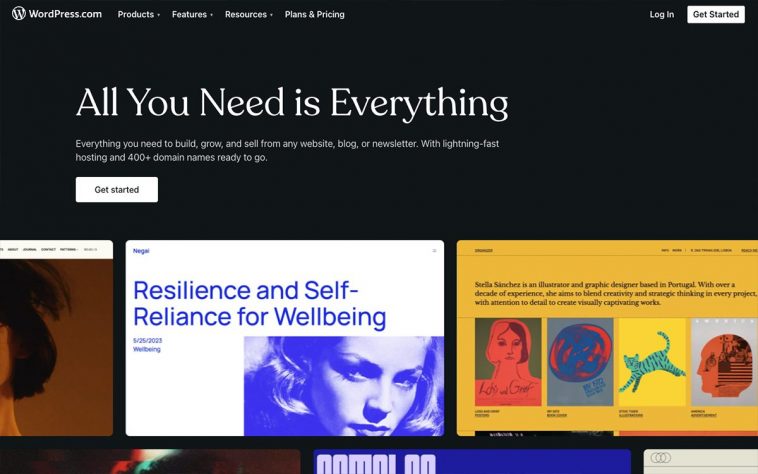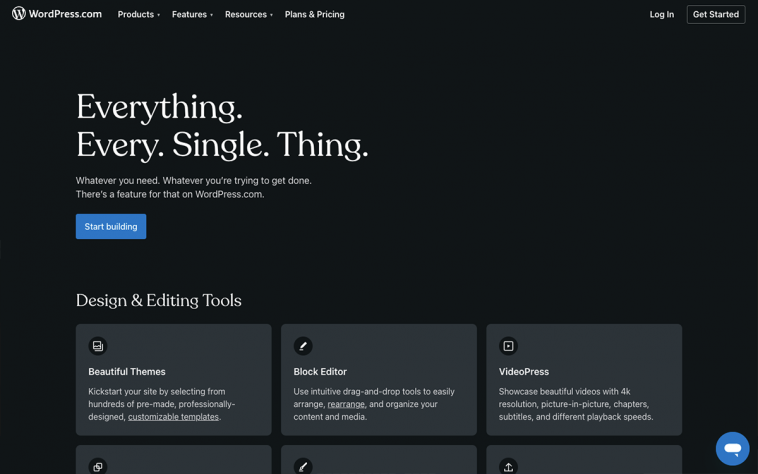WordPress is a user-friendly platform, but like any tool, it does require a certain level of degree of knowledge to use effectively and avoid mistakes. Common WordPress mistakes can happen while trying to customise a theme, configure a plugin, or editing custom code. These mistakes depend on what type of website you’re trying to create, how familiar and comfortable you are with the tools you’re using, and even the task you’re attempting to perform.
WordPress is a great platform for small business owners. It’s simple to learn and to use it, and can help you build a sophisticated website that will grow with your brand. But if you don’t understand it, it’s easy to make beginners’ mistakes.
Here are some tips to avoid the most common mistakes new WordPress users make.
1. Know the difference between WordPress.com and WordPress.org
Although they appear similar, WordPress.com and WordPress.org (also known as self-hosted WordPress) are very different. Knowing this is key to choosing which platform is best for you.
WordPress.com is a hosted website-building platform – that means your website lives on their domain. When you sign up for an account, you don’t need a hosting provider or a registered domain:

However, WordPress.com has many restrictions and limitations. For instance, you can’t use most plugins without upgrading to a paid account. This can seriously limit your site’s functionality and long-term potential.
Additionally, your site may have to display WordPress ads, and the free domains include branding (as in mysite.wordpress.com). These features don’t look very professional.
Self-hosted WordPress gives you complete control over your content.

Although you’ll have to find and pay for a web host, this also means you get to choose a quality WordPress hosting provider rather than settling for default service. This will offer you better performance, security, and support.
2. Select a professionally developed theme
WordPress themes influence your site’s appearance, but can also affect its functionality. While there are many free themes, premium options provide more advanced features, such as additional customisation options, demo content, and more.
When choosing a theme, there are a few elements to consider:
- Responsive design. This means your website will adjust to fit the screen size of the device it’s displayed on. Having a mobile-friendly site is standard these days, so this is essential.
- Regular updates. It’s important to look for themes that are well–maintained by their developers. A ‘Last Updated’ date that is less than six months ago is usually a good sign.
- Minimal plugin requirements. Avoid themes that require multiple companion plugins.
There are many online marketplaces where you can buy premium themes. It’s wise to read user reviews before purchasing, so you can make an informed decision. You may also want to look for sellers that offer a money-back guarantee, in case you’re not satisfied with the theme.
3. Don’t ignore website performance
How fast your website loads influence your visitors’ and search engines’ perceptions of it. Optimising for performance can help decrease your bounce rate and improve your search engine rankings.
So how do you do it? You can improve your site’s performance by:
- Choosing a reliable WordPress hosting provider
- Compressing your image files with a plugin such as EWWW Image Optimizer
- Using a WordPress caching plugin
- Installing as few plugins as possible, as too many can bloat your site and slow it down
To test your site’s current loading times, you can use Google PageSpeed Insights. This platform offers even more suggestions for improving your website’s performance.
4. Secure your WordPress site
WordPress security is vital to protecting user data and other sensitive information. There are several WordPress best practices that can help you lock down your site, such as:
- Using unique login credentials. Choose something other than “admin” as your username, and make sure your password receives a rating of “strong” from WordPress’ built-in password strength meter.
- Updating WordPress, plugins, and themes. These updates often contain security patches that work behind the scenes to keep out hackers.
- Installing a Website Application Firewall (WAF). This feature prevents malicious traffic from reaching your site. Cloudbric WAF and Wordfence are two effective providers for WordPress users.
- Maintaining backups. Many hosting providers and other services offer automatic backups. However, it’s wise to have your own copies on hand and easily accessible.
Security is not an area where you want to cut corners, so it’s best to be thorough here.
5. Track user behaviour
Monitoring user activity on your site can help you determine what’s working well and which areas need improvement. Two platforms you can use for this are Google Analytics and Google Search Console:

It’s important to note that these tools only track user behaviour from the time you connect your accounts to WordPress. Setting them up as soon as possible is the best way to quickly collect enough data to make informed decisions about your website.
Other quick fixes for new WordPress sites
WordPress comes with certain default settings you’ll want to personalise. Here are a few to consider.
Add your own tagline
For starters, you can remove the “Just another WordPress site” tagline, as it looks unprofessional. To do so, navigate to Appearance > Customise:

You should see a tab labelled Site Identity (although it may be called something else, depending on your theme):

Click on it, and either delete or replace the tagline:

It’s also wise to upload your own logo here.
Set up an optimised permalink structure
You may also want to change your default permalink structure, which determines what your posts’ URLs look like. This can be done by going to Settings > Permalinks:

The recommended setting is the Post Name option, or creating a custom format.
In addition to setting the correct permalink structure, be sure to set your WordPress site address to https if you have a SSL certificate with your hosting account. You can find this setting under Settings > General.

Join the WordPress community
Avoiding the mistakes we discussed above will set you on the path to running a successful WordPress site. But you’ll be missing out if you don’t get involved in the platform’s stellar community.
Participating in forums, joining local meetups, and attending official WordPress events can help you improve your site. They also provide a chance for you to give back to the community and lend a hand to other users.
Now that you know the most common WordPress pitfalls to avoid, you’re well on your way to building the ideal site for your business.
Still need a domain? Register one today!









